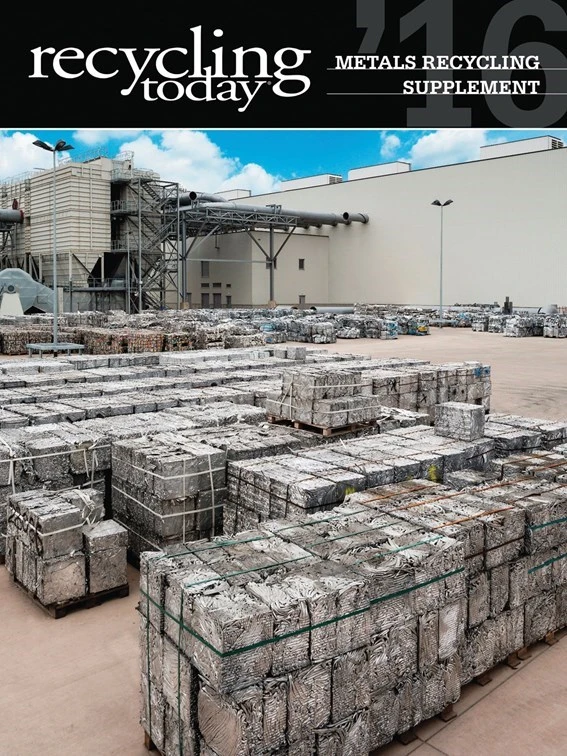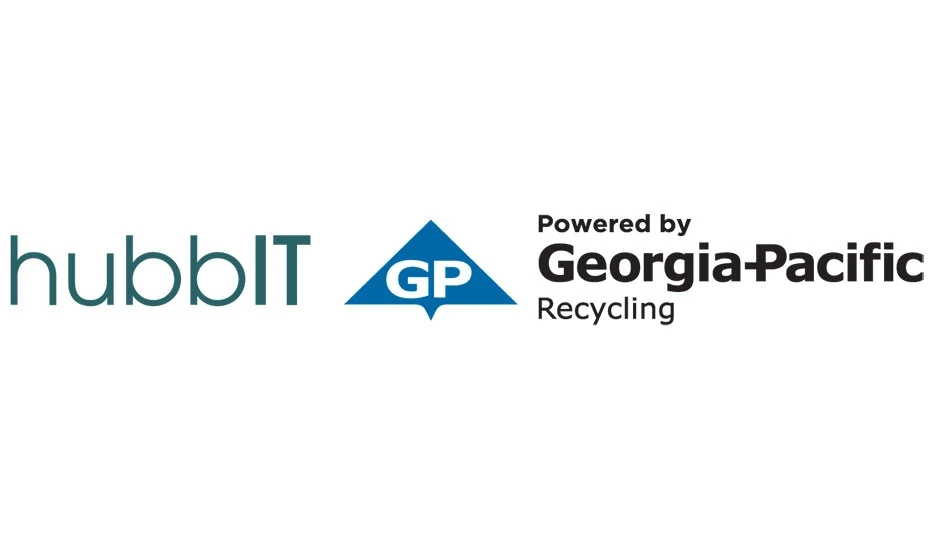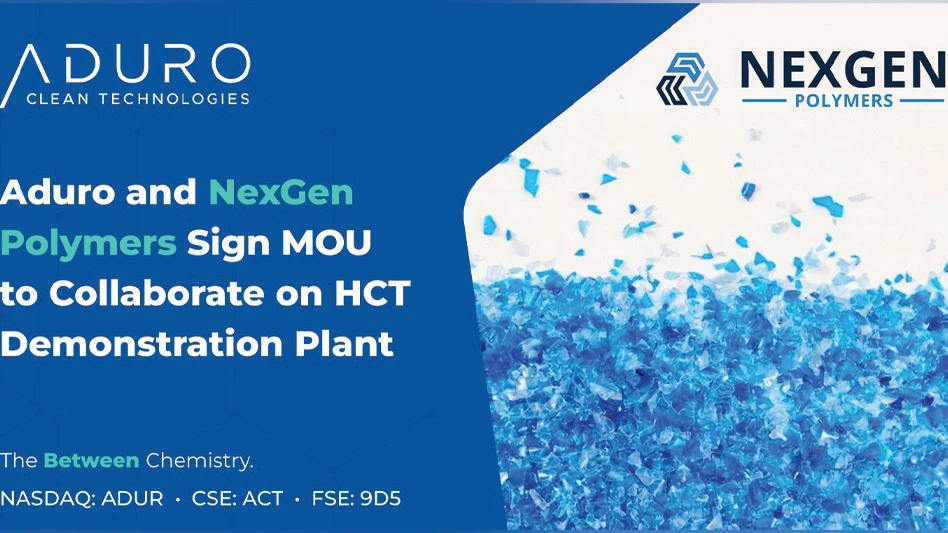
Robert Stein grew up in Vancouver, British Columbia, as the son and grandson of scrap dealers. During his 42-year career he in some ways journeyed long distances from those origins, but in other ways he never strayed far from his roots.
In December 2015, Stein retired as senior vice president of nonferrous marketing and trading at St. Louis-based Alter Trading Co. after more than 10 years with the firm. He spent the prior three decades of his career in positions of increasing responsibility for three other metals trading and processing companies.
His career allowed him to work from three of the world’s leading financial centers—New York, London and Tokyo—and to represent his industry as an officer of the Brussels-based Bureau of International Recycling (BIR).
In November 2015, Stein sat down with Recycling Today Editor Brian Taylor at the Hong Kong office of Alter Trading to review his career and to offer his perspective on what has changed in the scrap metals industry in the last four decades and what has endured.
Recycling Today (RT): How did you get started in the scrap industry and how did your career unfold?
Robert Stein (RS): My grandfather started in the business in Vancouver just after the first World War. As a kid, I worked in his warehouse or the office from the time I was 6 years old, I think. I was licking stamps and making $5 a week. That’s how I was introduced to the business.
Post college I was in my family business for a short period. I had to admit I didn’t like schlepping around in muddy Vancouver and wasn’t into mechanical things in any way. To work in a yard you’ve got to know about those kinds of things.
But I was interested in how things were valued and how they were traded. So I let my father know I didn’t want to inherit his business, and he was actually not terribly unhappy—he wanted to retire and did so.
After determining I would not maintain the family business, I went to work for a company in New York called Brandeis, Goldschmidt, a gilt-edged trading house. It was the metals trading arm of the London merchant bank SG Warburg. Sir Siegmund Warburg was the owner. He was extremely brilliant and essentially invented Eurobonds and Eurodollars.

It was a very formal place, and the London office looked like the bank in the opening scene of “Mary Poppins.” It was an incredible place to get an education and to have the opportunity to go to London and train for several months.
I also had the opportunity to work in a copper smelter and refinery—and that’s a great way to learn the business, too.
Having offices around the world, at one point they sent me to run the Tokyo office—I was there for about one year. Years later, Brandeis asked me to go to Asia, and they essentially wanted me to bounce between China and Japan. The financial terms were not good enough, so I quit. A China assignment in the late ’70s was an arduous one to say the least.
I called a contact at Commercial Metals Co. (CMC), and they hired me and told me they would find a place for me. I ended up in Los Angeles, running the nonferrous branch of a scrap yard that yielded about 1,500 tons per month of copper and brass scrap.
Again, I learned more about the business and how a company works—CMC was already a public company then and very well-run by Stanley Rabin. He was a forward thinker and extremely smart.
I was in Los Angeles for a year, and then they asked me to come to Dallas. We started a program to convert No. 2 copper scrap to cathodes, which was beneficial to our yards. I also got involved with using COMEX contracts to set up a “cash and carry” program to maximize the financial and timing aspects of trading.
In 1984 I accepted a position with Louis Padnos Iron & Metal (now Padnos) of Holland, Michigan, and enjoyed working there for just short of two decades. But eventually I wanted a change, and I knew Alter had been looking for a copper trader. I called them, and it worked out great. I had to learn all about aluminum and stainless and zorba markets—all pretty new to me. Alter had 16 scrap yards then; now we have more than 50. There has been a lot of growth, but whether you have 16 scrap yards or 100, the volumes grow, but the principles are the same. We expanded, but why is there a Hong Kong office?
When I came to Alter, it became increasingly clear to me that our supply source was at risk to a lot of suitcase traders—Chinese buyers who sometimes literally had suitcases of money and were buying scrap in the U.S. and shipping it back to China. My attitude was: If you’re going to come and violate my suppliers, I am going to come and violate your consumers—and it worked. It provided us a greater opportunity to go from street to furnace, from the U.S. to China. This Hong Kong office has helped us get that last bit of margin and also puts us in China, which then established world prices of scrap. That’s why we’re here.
RT: How many different roles have you played in the industry, and what aspect of the job have you most enjoyed?
RS: I have been involved with trading metals and, initially, representing a company in a foreign country. In my earliest role, I marketed materials ranging from bulk ferro-alloys to precious metals; but, during most of my career, I have focused on the domestic and international trading of copper and brass.
That has entailed setting up hedging programs for consumers and fabricators, initiating hedging programs for my company and others. Brandeis, Goldschmidt was among the first to get into open pricing of copper scrap. It was done in our London office, but typically not done in the U.S. at that time. When I came back to the U.S. I didn’t understand why it wasn’t done. So we established scrap as being tied to the COMEX price. In the mid-1970s, people were beginning to understand what COMEX was and the relationship between copper scrap and that market. Brandeis was at the forefront of allowing our suppliers to price their scrap at a prescribed future date. At the same time, Kennecott went to COMEX-based pricing back then—previously copper was sold by producers at the so-called producer price delivered to the buyer. This really opened the minds of consumers and fabricators as to what COMEX was. Now it is common, and scrap dealers want to know how much under the COMEX price the scrap price is, even if they don’t run hedged positions.
I got a taste for international trade, and there is absolutely no question to me that the trade that developed in the Far East, and even before that, is the most interesting thing to me, and it always was. Even going back to my days at my dad’s scrap yard, before container shipping, there would be barrels on a pallet with markings on them and the destination. Here was this yellow brass in drums going to India, and I’m thinking: How on earth can this go from a scrap yard in Vancouver to India? Who the heck thought of that? How does that happen? And it stuck with me, and it still amazes me. When you think how absurd it seemed at that time, it was beyond belief. The idea of those materials leaving probably got me thinking about leaving my hometown also. So when I had the opportunity to interview in New York, and they offered me a job, I took it.
RT: What do you consider to be among the greatest changes in the scrap industry since you’ve been involved in it?
RS: One is the rapidity of changes in the prices of metals. We used to offer copper overnight to maybe Japan or Korea, and we’d always add a little value per pound to cover the risk. You can’t do that anymore—the markets are much broader. Here I am sitting in Alter’s Hong Kong office, and having this office allows us to price metal pretty much 24 hours per day. Along with this transparency is the vastness of participation in the market and the fact that people realize there is a close relationship between higher scrap grades and the terminal markets. That also became evident in aluminum to some degree.
So you have this huge market, tremendous volatility but also a vast amount of transparency. That transparency has changed the scrap industry tremendously. Everybody knows everything, from the guy bringing it in across the scale to the consumers to the toll customers. Many advantages are gone.
I don’t know if it’s unique to our business, but the old adage of my handshake is my bond—the civility in this business—is diminishing. It has to do perhaps with cultures that are strange to us or from misunderstandings that can be caused by language differences. There were certainly many bad examples set in the fall of 2008. Behavior by many Chinese traders and consumers was nothing short of disgusting. But, the rules of engagement, if you will, have changed a lot since then.
RT: By contrast, what has stayed the same, or what are some enduring characteristics or traits?

RS: What has stayed the same is that there is this used material that can be remelted and reused as if it were primary metal at a value that is a fraction of digging the stuff out of the ground—and that has always been the case. When I was about 6, my uncle explained to me what happened to scrap iron. And that is the constant, and it’s the basis for this industry: that we collect, sort and prepare for recycling goods at a fraction of the cost (in most cases) of digging it out of the Earth. And that’s the crux of it all.
I think the people who do control and will control secondary metal units will always play an important role in saving the Earth (if that doesn’t sound too dramatic). It’s a powerful thing to have. That has stayed the same—we’re doing the same thing. There have been technological changes, but it’s the same business.
RT: To what extent do you think the general public understands and appreciates the scrap recycling business?
RS: Unfortunately, I think the general public looks at scrap dealers as larcenous individuals who are stealing bronze statues and catalytic converters. I don’t think people stop and think about what the industry does.
I think ISRI (the Washington-based Institute of Scrap Recycling Industries) does a fantastic job of bringing to light to the public what we do—they really do. It’s incumbent upon us as an industry to sponsor programs and let people understand.
But it is still a conversation stopper at a cocktail party when I tell people what I do. Most people reply, “Oh, that must be interesting . . . have you tried the shrimp?”
RT: Do you feel personal relationships have remained a vital part of conducting the business? To what extent do you have concerns that the business now moves so fast that people may not forge the types of personal relationships that used to be more common?
RS: One might think with the price transparency we have now it would be less so, but personal relationships remain so important. Quite often when we have a visitor in St. Louis, we may have done some business without meeting, but it’s an opportunity for me to invite them to my house. Personalizing a relationship helps, especially if things go wrong somewhere along the line.
Northwest Airlines used to have a commercial with two hands shaking and the message, “you can’t fax a handshake.”
I have told my traders and my superiors, I don’t care where in the world our customer is—across the river or in New Delhi—they need to be known, and you have to see them. You have to know where your metal is going and what they are doing with it. Otherwise, I am not convinced you can optimize the value of your scrap. It’s hard to find the most appropriate destination from behind your desk. A good supplier, or a good consumer, is rightfully proud of his operation, and showing him that you have a genuine interest in seeing his place of business is important.
“We used to offer copper overnight to maybe Japan or Korea, and we’d always add a little value per pound to cover the risk. You can’t do that anymore—the markets are much broader.”
I think personal relationships are formed in different ways now, but they are still personal relationships. They may be formed on Facebook or whatever, and I think a lot of it remains to be seen. But when I see 50 or 60 people at the Young Traders meeting at a BIR Convention and they hang out, I think the personal relationships will continue to endure. It’s an industry that is so dynamic. We depend on our peers for ideas and solutions to issues and sometimes those arise when we can sit down over a cup of coffee or a beer. I think that is very valuable.
RT: What advice do you have for people who are entering the industry or are considering entering the scrap industry?
RS: Don’t lie to people. Don’t try to represent yourself as more knowledgeable than you are. Use the technological advances you have at your desk and dig; find out who is producing scrap, find out where it is going. Maintain a very high level of ethics. The honest way of doing business is exceedingly important. People have to have trust in you and what you’re supplying them—the quality of the package you’re making if you’re in the physical business. Operate in a straightforward fashion—it works.
Not everyone may like me, but no one can say I cheated them.
RT: Are you open to staying involved in the nonferrous metals industry? If so, what intrigues you about the future of the sector?
RS: I don’t want to be involved, I don’t think, in a day-to-day role. I think if I can add value to a trade association or as a consultant relating to metals or to international trade that could be interesting. I think I will wait and see to see what develops.
I intend to work and volunteer with kids in at-risk communities here in St. Louis. It’s what I would have wanted to do before 42 years in the scrap industry took hold.

Explore the Jan 2016 Metals Recycling Supplement Issue
Check out more from this issue and find your next story to read.
Latest from Recycling Today
- ReMA opposes European efforts seeking export restrictions for recyclables
- Fresh Perspective: Raj Bagaria
- Saica announces plans for second US site
- Update: Novelis produces first aluminum coil made fully from recycled end-of-life automotive scrap
- Aimplas doubles online course offerings
- Radius to be acquired by Toyota subsidiary
- Algoma EAF to start in April
- Erema sees strong demand for high-volume PET systems







